Everything you need to know about Manx cats
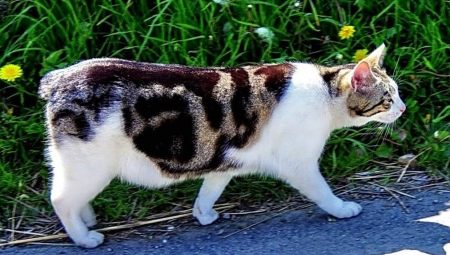
There is a legend that the Manx cat was late for Noah's ark, and the closing door chopped off its tail. Isle of Man cats are naturally tailless, a persistent gene mutation. This type of cat is very popular in the USA, Great Britain, Scandinavian countries. Tailless cats are a symbol of good luck and happiness on the Isle of Man: they are idolized, proud of the inhabitants of the island, and also depicted on English coins and postage stamps.
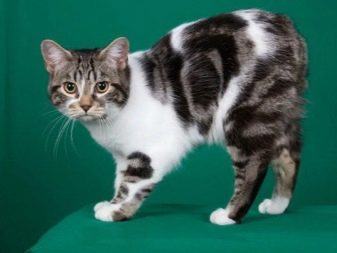
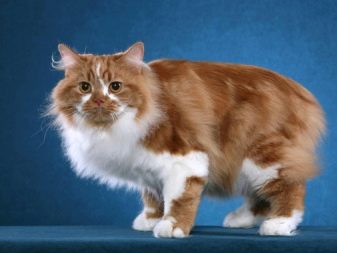
Origin story
The history of the origin of Manx cats is ambiguous, there are several versions:
- most likely, representatives of this breed are from Asia, because they are also found in Russia and China, but it was on the Isle of Man that the taillessness gene was passed on to all individuals inhabiting it today;
- according to another version, these cats are descendants of the Japanese representatives of the Bobtail breed with a very short tail;
- according to the third version, they got to the island from a sunken Spanish ship.
The inhabitants of the island are delighted with these cats and it does not matter how this breed was introduced: tailless cats are reflected not only on coins, but also on jewelry, paintings and various works of art.
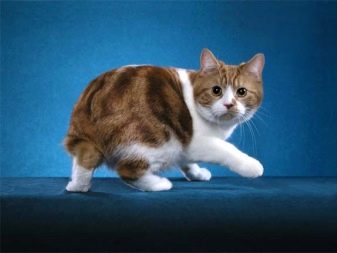
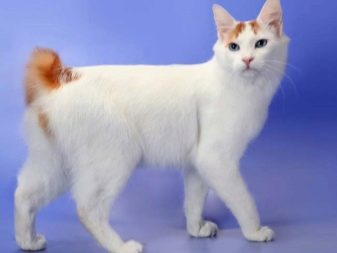
Description
At the very beginning of the 20th century, the Manx cat lovers club was founded and the standard of purebredness of these animals was adopted, where the main feature is not the absence of a tail, but a special structure of the spine and, as a consequence, a "jumping gait".
The most thoroughbred is the rampi variety - a cat without a single caudal vertebra. Less valuable variety - riser (such individuals have cartilage and a tuft of hair instead of a tail).Stumpies have a short hooked tail (they are no longer allowed to show).
Long - a normal tail of medium length, such a cat is obtained when crossing two ramps... They have no access to exhibitions, but they are in great demand as partners for mating with rampis - from such a union, purebred Mainx cats with very good health are obtained.
Male and female cats of the Mank breed are very different in size: female representatives are unusually miniature, like 4-month-old kittens. The average weight of females is 4 kg, males - more than 5 kg.

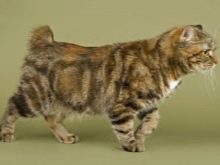
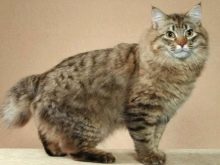
Distinctive features of thoroughbredness are spelled out in a special standard for the Manx breed:
- these cats have a kind of "rabbit gait";
- they have a rounded head with large, round and slightly slanted eyes;
- bulging cheekbones;
- short thick neck;
- ears set high, tilted forward;
- correct bite of the teeth;
- strong double chin;
- muscular strong body;
- powerful hips and a rounded bottom;
- the hind legs are slightly longer than the front ones;
- they have a strong skeleton, a broad chest and sunken sides, short hair with an undercoat.
The Manx breed is considered short-haired, and long-haired tailless cats are identified as a separate breed of Cimrick (such a cat is considered unique, since it is almost impossible to find a pair for mating that meets the strict standards of the breed).
Cimrick cats are an endangered species.
Manx live long enough - about 14 years, there are also some centenarians among them who have lived up to 20 years.
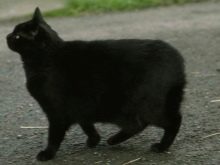
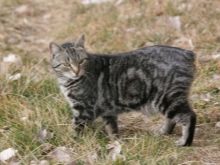
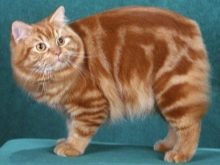
Character traits
By their nature, Manx cats resemble dogs: loyal, intelligent, good-natured, get along well with children and dogs, playful, deeply attached to all family members. These cats love to watch the flowing water and fish, they are good at catching rodents, and they also love to climb trees, but they do not know how to go down at all.
Tailless cats are also unique in that they are easy to train like dogs - can learn to bring things and run after the ball. Manks do not need to walk on the street, most of them are couch potatoes, but best of all individuals of this breed take root in a private house, where they will feel like the owners of the backyard territory. But they can adapt to any living conditions, up to a small apartment.
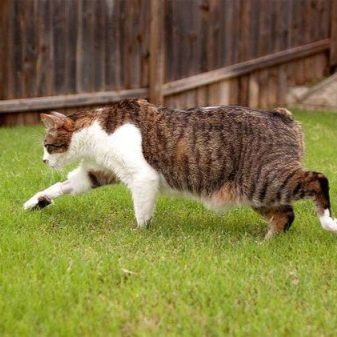
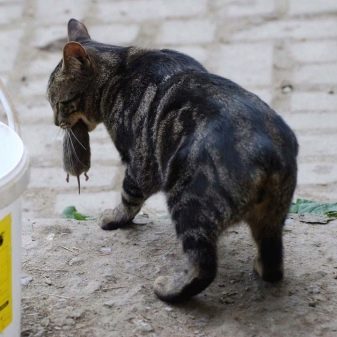
Coat color options
The coat color options for Manx cats are so varied that even the official breed standard does not have an accurate description. The coat color of tailless cats can be almost any, with the exception of:
- Siamese and other "hybrid" designs;
- lilac and chocolate colors.
Much more important than color is the presence of a thick undercoat combined with silky hairs of medium length. A similar coat is found in rabbits, it is plush and silky at the same time.
According to breed standard the color of the coat of the Mainx cat should be in harmony with the color of the eyes.
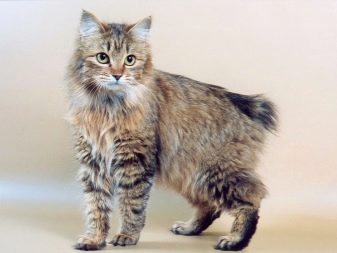
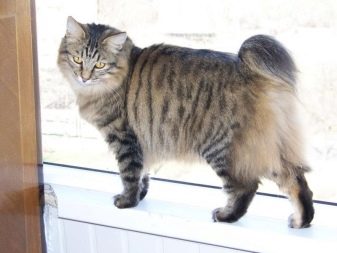
Conditions of detention
Maine cats need daily brushing of their hair with a comb of medium hardness, the use of furminator is permissible no more than twice a week and only during seasonal molting. It is also necessary to rinse the eyes once a week or as it gets dirty (if the eyes are constantly dirty, this may indicate the presence of an infection, in which case the cat must be shown to the veterinarian).
The auricles should be wiped once a week with a cotton pad soaked in 3% hydrogen peroxide. Brushing your teeth should be done when plaque is present.
This procedure can be entrusted to a specialist or performed independently using a soft finger brush and special cat toothpaste.
To prevent the appearance of plaque on the pet's teeth, it can be given special dry food.
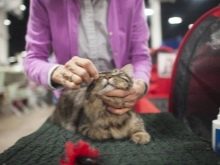
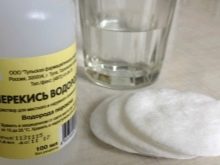
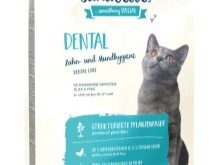
Tailless cats need to have their nails trimmed. For the first time, it is better to carry out the procedure with a specialist in order to clearly understand how to trim the claws correctly and with what tools, without harming the health of the pet.
The Manks love to look at the water, but they are reluctant to take a shower, so if the pet is a couch potato, it is better to wash it only if absolutely necessary: on the eve of an exhibition, mating or childbirth (You can use a basin and a jug of water to avoid stress on the animal). At the bottom of the bath, you need to lay a thick terry towel, turn on the shower with room temperature water, lather your hands with a special shampoo, wash the animal and rinse gently without touching the ears. After bathing, you need to wrap the cat in a towel. After 5 minutes, this towel must be changed to dry. In the room where the cat dries, there should be no drafts, it is advisable to warm the air to 25-27 degrees, ideally, the animal should be kept in a towel until it is completely dry.
A tailless cat's litter box should always be kept clean, so it makes sense to use lumpy granulate to absorb moisture and odor as a filler. Additionally, you will need a scratching post with a house and toys. The Manks are very curious, so you definitely need to install additional protection on the windows (mosquito nets only create the appearance of security, in fact, they are fragile and easily torn).


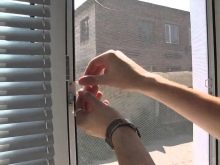
Feeding
In the first 2 months of life, kittens need only mother's milk, then you can begin to introduce complementary foods with scraped boiled meat once a day (the first feeding is 1/5 teaspoon), after a week you can gradually introduce low-fat cottage cheese, slightly diluted with water. It is recommended to keep this dietary plan for up to 4 months.
When the kittens are 4 months old, you can give dry food, starting with a few pieces a day, gradually increasing their number to the norm by the weight of the animal, according to the instructions for the food.
Also, from 4 months it is time to start introducing vitamins and minerals into the pet's diet.
The number of feedings per day depends on the age of the kittens (at 4 months you need 4 feedings, at 5 already only 2 times a day, as well as for adults). After purchasing a kitten for about 2 weeks, you need to adhere to the nutrition set by the breeder, then it is better to consult a veterinarian and draw up an individual menu.
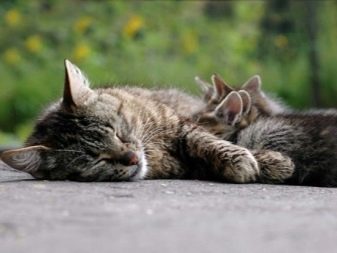
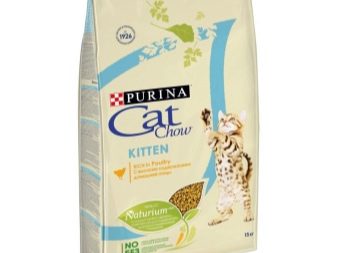
Typically, the daily diet of Mainx cats includes:
- 1/3 premium dry food (preferably large hard pieces that need to be gnawed);
- 1/3 natural products (boiled beef and poultry meat, cottage cheese with a low percentage of fat, scalded with boiling water boneless sea fish, 1 boiled quail egg per week, 1 tablespoon of oatmeal in water per day - it is recommended to mix it with wet food);
- 1/3 super premium and premium wet food.
After each meal, it is necessary to throw away the leftovers and wash the dishes; there should always be clean drinking water in a clean bowl. It is recommended to keep the cat grass on the floor so that the cat does not drop it from the windowsill. It is strictly forbidden to feed tailless cats "from the table", they have a special curved spine, in which it is strictly forbidden to gain excess weight.

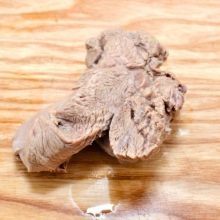

It is necessary to timely vaccinate and carry out the prophylaxis of parasites according to the schedule agreed with the veterinarian. Do not spare your efforts to find a good veterinarian, such unusual cats must be monitored constantly, visit the doctor at least 2 times a year to avoid problems with the spine, excess weight, etc. If the animal has any disease (herniated disc, vision problems , dysfunction of the digestive tract, dystrophy of the limbs), the individual is considered culled and is not allowed to mate. In this case, sterilization may be required.

Breeding
Not all kittens in a litter are born tailless, and if you cross two tailless you will get offspring with normal tails (the tailedness gene gives such an effect as a minus for a minus gives a plus). Therefore, it is extremely unprofitable to maintain a nursery for breeding individuals of this breed. If a kitten's tail is docked, it will undermine its health, it may even be fatal.
You can not cross representatives of the Mainx breed with individuals of other breeds.
The healthiest, strongest offspring with the minimum set of genetic diseases are born from the union of the Manx long-tailed individual and the Rampi. Manx becomes sexually mature at 3 years of age; it is not recommended to mate before this age.
A rampi cat can give birth to no more than 4 kittens, if an ultrasound scan shows 6 individuals, then a cesarean section will be required, otherwise the cat will die in childbirth.
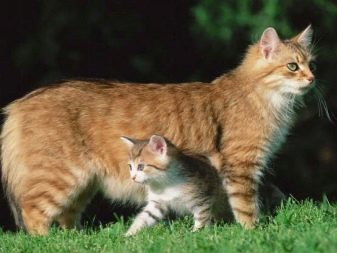

Mainly a kind of ramp, sometimes a raiser, is allowed to participate in exhibitions. When buying, it should be borne in mind that in Russia there are no official catteries of tailless cats and they can only be bought from private owners. In terms of cost, ramp, riser and stump are different: the shorter the tail, the more expensive the kitten. Also, the price rises when the parents have champion titles.
When buying a kitten, the age of a kitten must be at least 4 months, a purebred individual must have a jumping gait. A healthy kitten has good hair, clean eyes, ears and nose, and is very playful and agile.
When buying a kitten, a package of documents is attached to it: a sales contract, a passport (it contains the name, date of birth, pedigree) and a certificate of vaccinations.
The minimum price for a kitten is $ 500, and if his parents are champions of exhibitions, then it can go up to $ 2 thousand. Purebred kittens are never sold with discounts, because it is very difficult to find a pair for mating, and many kittens are rejected by the age of 4 months.
It is impractical, risky and very costly to breed tailless cats for sale. Do not forget that such cats are often "golden" clients for veterinarians: in addition to constant monitoring, numerous hereditary diseases can be revealed. It is more expedient to purchase any short-haired pedigree cat, it has an order of magnitude less genetic diseases and restrictions on exhibitions. However, as pets, the Manx are beautiful in their own way.
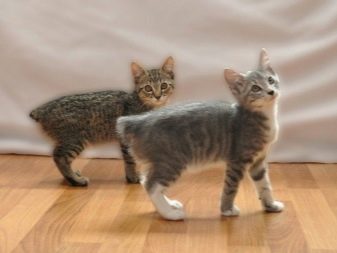
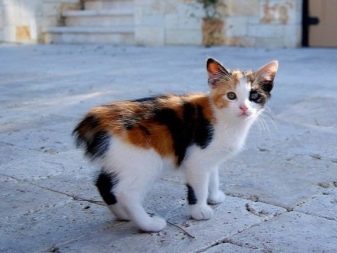
For the characteristics of the Manx cat breed, see the following video.
































